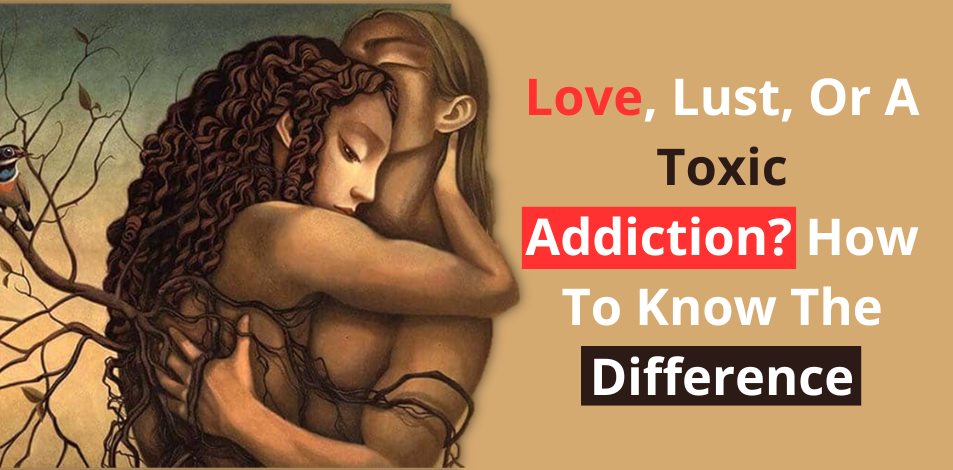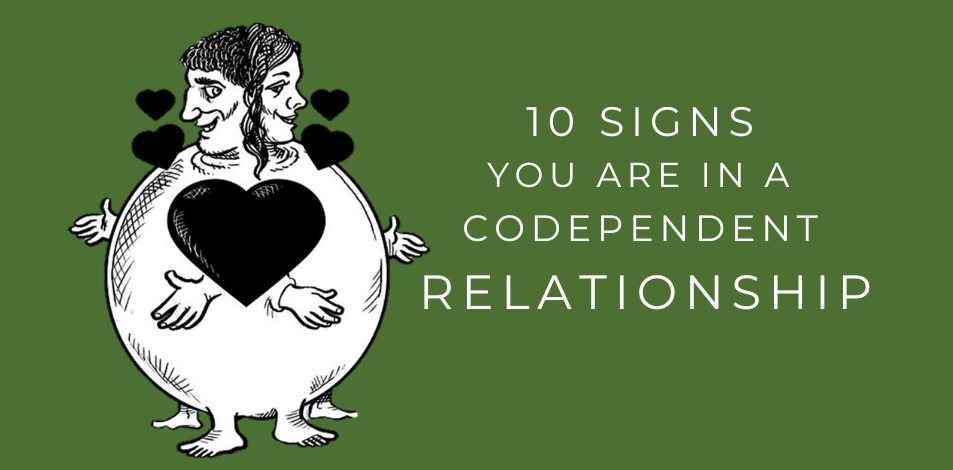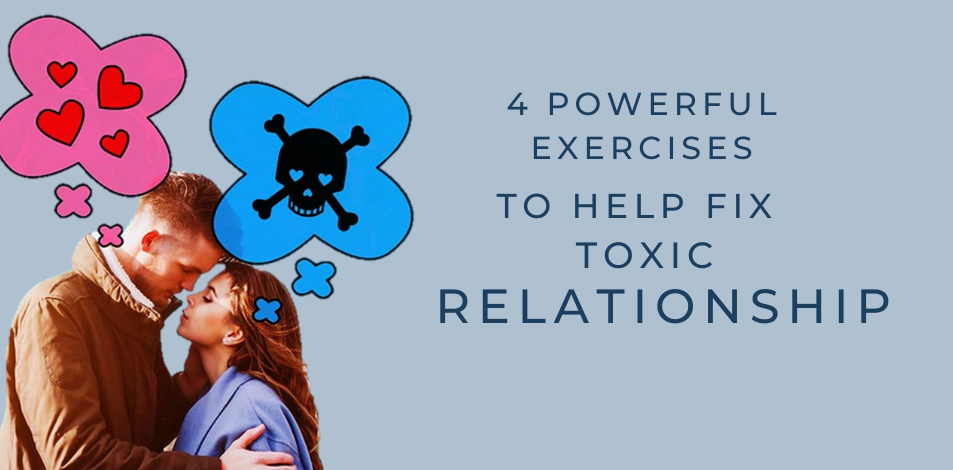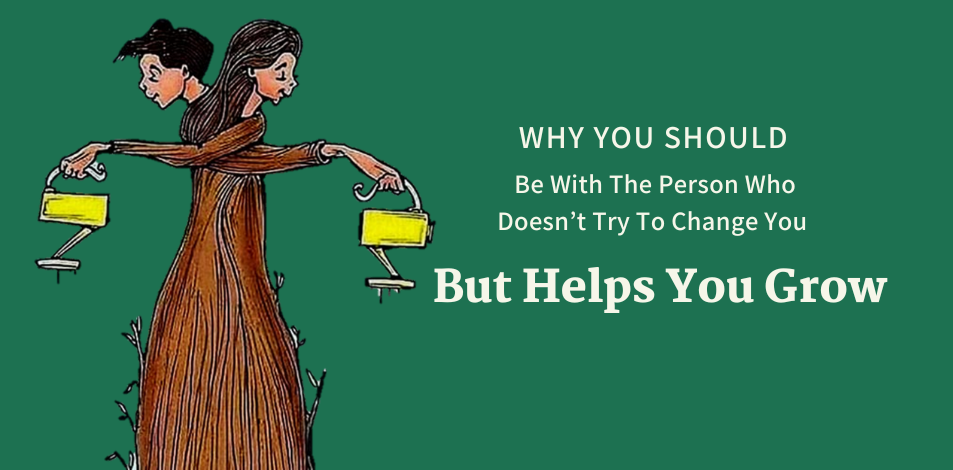

Love refers to the bond of affection and mutual trust between two souls. While lust is based on outward appearance and attractiveness! Are you wondering if you are in love or lust?
Is your obsession with someone a sign of love or addiction? Whether you are in a troubled relationship because you are addicted or in love?
It’s complicated, and lust, love, and addiction aren’t always mutually exclusive. Endless analysis does not help or change our feelings because we are often pushed by forces outside of our conscious awareness.
Initial attraction triggers neurotransmitters and hormones that create the excitement of infatuation and the strong desire to be close and sexual with the person.
These chemicals and our emotional and psychological makeup can distort reality and idealize the object of our attraction. The time we spend fantasizing fuels our passion to be with him or her. This is normal when it does not control our lives.
Related: Sternberg’s Triangular Theory of Love and the 8 Types of Love
When it’s pure lust, we’re not very interested in spending time together without having sex or expecting it. We don’t want to discuss real-life problems and may not even want to spend the night.
Fantasies are mostly sexual or about a person’s appearance and body, and we’re not interested in meeting a person’s needs outside of the bedroom – or maybe even inside!
Sex releases oxytocin, the feel-good chemical that makes us want to snuggle with our partner.
As we get to know our lover, we may want to spend more or less time together, depending on what we learn. At this juncture, brain chemicals, combined with our attachment style and psychological issues, can lead us to associate with codependency through romance or a love addiction that feels like love but is driven more by our need to avoid a chemical rush. Feelings of abandonment, depression and low self-esteem.
Excitement and desire may be heightened by intrigues or our partner’s unpredictability or unavailability. We may remain attached and even crave our partner, but our discomfort or unhappiness grows. Instead of focusing on it, our hunger to be with him takes center stage, despite the fact that inconvenient facts or personality traits are hard to ignore.
We may feel controlled or neglected, insecure or disrespected, or discover that our partner is unreliable, manipulative, lies, rages, has secrets or has a major problem, such as drug addiction or serious legal or financial problems.
However, we stay and heed our best judgment to leave.
Increasingly, we hide our fears and doubts and rely on sex, romance, and fantasy to sustain a relationship. Out of empathy, we may be drawn to help and “rescue” our partner and/or try to change him or her back to the ideal situation into which we have “fallen.” These are signs of addiction.
But lust can also lead to true love when we get attached and get to know our sexual partner, and lust doesn’t always fade away. I have seen couples who have been married for decades and have a vibrant sex life.
However, true love requires that we recognize our separateness and love our mate for who he or she really is. There is always some idealism in a new relationship, but true love lives on when that fades away. As the relationship grows, we develop greater trust and closeness.
Instead of trying to change our partner, we accept him or her. We want to share more of our time and life together, including our problems, our friends, and our family. Our loved ones’ needs, feelings, and happiness become important to us, and we consider planning for the future together. When the passion is still there, we are lucky to have both love and lust.
Love and codependency may co-exist or be difficult to distinguish between them because co-dependents tend to be idealists and often happily sacrifice themselves for the sake of their partner. When serious differences and problems are largely ignored, minimized, or justified, it feels more like codependency, because we don’t see or love the whole person.
Facing the truth will create an inner conflict over our fear of emptiness and loneliness. Likewise, when our focus is on how our partner makes us feel or how he or she feels about us, our “love” is based on our own self-centered and self-reliant needs.
Related: Why Love Hurts: 5 Reasons Loving Relationships Can Be Painful
Healthy relationships and codependent and addictive relationships have very different trajectories. Healthy partners don’t “fall in love.” They “grow in love.” They are not driven by overwhelming, unconscious fears and needs.
Comparing:
Supported relationships
- Intense attraction – you feel anxious.
- Perfect both of you, ignoring the differences.
- Falling in love and commitment.
- Get to know each other.
- Get down.
- Clinging to the fantasy of love.
- Try to change our partner into our ideal.
- You feel resentful and unloved.
Healthy relationships
- Attraction and friendship begins – I feel good.
- The attraction grows as they get to know each other.
- Acknowledge the differences (or let go).
- Grow to love each other.
- Make commitments.
- settlement needs.
- Deepen love and acceptance for each other.
- He feels supported and loved.
Codependency is an addiction and underlies all other addictions, including sex, romantic, relationship, and love addictions. Lust and love, love and addiction can overlap. When we address our codependency, we can see whether or not the love remains. We may even leave an unhealthy relationship and still love our ex.
In the meantime, some things to know:
- It takes time to love someone. Love at first sight may be caused by many things, but it is not love.
- Having sex with strangers or multiple partners is a sign of sexual addiction.
- Compulsive activity, sexual or romantic, that feels out of control, such as compulsive sex, stalking, spying, constant calling, or texting is a sign of addiction.
- Ignoring your partner’s boundaries, and mistreating, controlling, or manipulating them (including people-pleasing or rescuing) are signs of addiction.
- Using sex or a relationship to overcome emptiness, depression, anger, shame, or anxiety is a sign of addiction.
- Using sex or romance to replace poor authentic intimacy is a symptom of addiction.
- Staying in a painful relationship due to fear of abandonment or loneliness is a sign of self-reliance and addiction, not love.
- The inability to commit to a relationship or stay with someone who is emotionally unavailable shows a fear of intimacy – a symptom of addiction.
- Too much or too little confidence are signs of addiction.
- Sacrificing your values or standards to be with someone is a sign of addiction.
Recovery from codependency and addiction requires abstinence, the support of a twelve-step program, and/or psychotherapy. It is very difficult to abstain from compulsive and addictive behavior without support because the unconscious forces that drive us and the pain of abstinence is overwhelming.
There is hope and a way out.
Codependency is an addiction and underlies all other addictions, including sex, romantic, relationship, and love addictions. Lust and love, love and addiction can overlap. When we address our codependency, we can see whether or not the love remains. We may even leave an unhealthy relationship and still love our ex.
In the meantime, some things to know:
- It takes time to love someone. Love at first sight may be caused by many things, but it is not love.
- Having sex with strangers or multiple partners is a sign of sexual addiction.
- Compulsive activity, sexual or romantic, that feels out of control, such as compulsive sex, stalking, spying, constant calling, or texting is a sign of addiction.
- Ignoring your partner’s boundaries, and mistreating, controlling, or manipulating them (including people-pleasing or rescuing) are signs of addiction.
- Using sex or a relationship to overcome emptiness, depression, anger, shame, or anxiety is a sign of addiction.
- Using sex or romance to replace poor authentic intimacy is a symptom of addiction.
- Staying in a painful relationship due to fear of abandonment or loneliness is a sign of self-reliance and addiction, not love.
- The inability to commit to a relationship or stay with someone who is emotionally unavailable shows a fear of intimacy – a symptom of addiction.
- Too much or too little confidence are signs of addiction.
- Sacrificing your values or standards to be with someone is a sign of addiction.
Recovery from codependency and addiction requires abstinence, the support of a twelve-step program, and/or psychotherapy. It is very difficult to abstain from compulsive and addictive behavior without support because the unconscious forces that drive us and the pain of abstinence is overwhelming.
There is hope and a way out.
Recovery includes:
- Learn more about the symptoms of codependency.
- Heal the shame and abandonment of your childhood pain.
- Build your self-esteem.
- Learn to be assertive.
- Learn to respect and meet your needs and take care of yourself.
- Take the risk of being honest about your feelings and needs.




